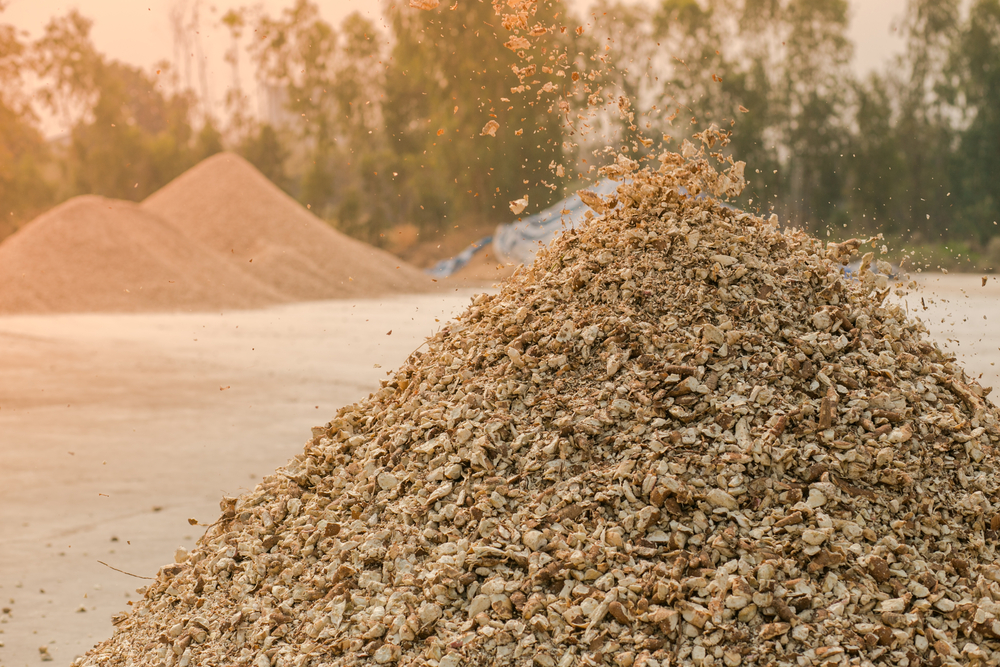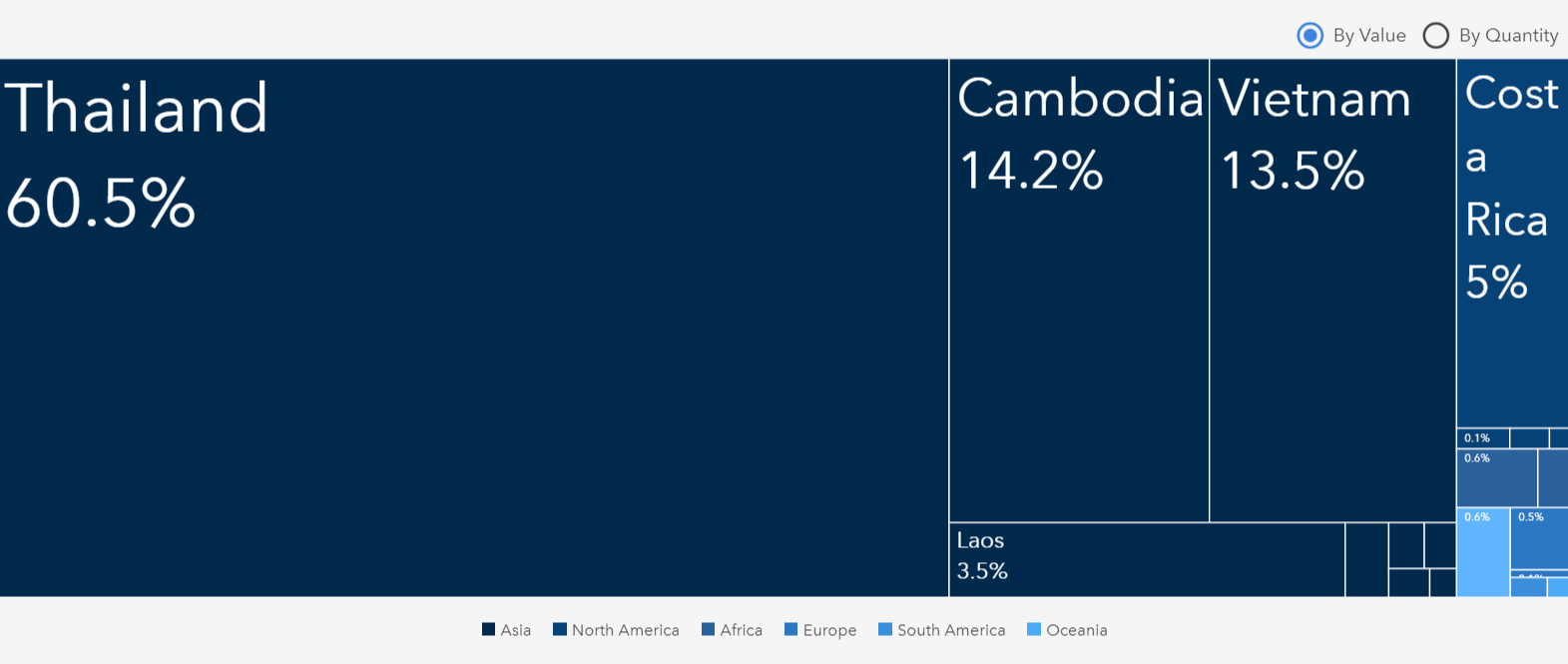Cassava Demand Stays Strong despite Decline in Production
Demand for Cassava Stays Strong
Cassava, also known as yuca or mandioca, is highly nutritious perennial plant harvested from November to February. Cassava typically grows in warm temperature and is known to prosper in less optimal conditions. For its tolerance to drought, cassava is one of the staple food for a population in sub-Saharan African countries. Cassava is commonly consumed in the form of flour or the root itself, which has culinary uses similar to that of potatoes. It is also used to make alcoholic drinks in South America.

Dried cassava roots processed into pellets or chips are used as livestock feeds
Other end uses of cassava are found in animal feed and energy sector. Cassava is processed to chip and pellet for animal feed, and the increasing livestock sector in China accounts for much of the demand. Due to its high starch content, cassava may also be processed to bioethanol for industrial uses.
While cassava production declined for the first time in two decades, the dominant market sentiment is that the decline is temporary and production will continue to rise in the future. Cassava feeds 500 million people in Africa and is well positioned in the Asian livestock feed and energy sector. It will maintain constant demand as it has, while the market experienced a surge in price this year. Though there was a provisional market expansion due to the price change, thelongevity of the high price is uncertain.
Thailand Dominates the Cassava Export Market
The Food and Agriculture Organization of the United Nations estimates the cassava production for 2017 marked 278.0 million metric tonnes, a slight decrease from 278.8 million metric tonnes harvested in 2016. In 2018, major exporters faced a more substantial decline in production.

The global cassava production has been on a consistent rise (source: Tridge)
Thailand is globally the top exporter of cassava and occupies 60.8% of the market. Most of its exports happened within Asia - 75% of the Thai cassava products go to China, 8% to Japan, and 6% to Indonesia. The projection of 2018 cassava production marked below 30 million metric tonnes for the first time in 6 years. With a significant rise in cassava price, however, thechange in production did not affect the overall export value.

Thailand is the dominant exporter of the cassava export market
Cambodia, ranking 2nd in export, also experienced a surge in cassava price this year. Battambang Commerce Department states the price of cassava doubled this year due to the 40% fall in supply, as many domestic producers decided to switch to more profitable crops to harvest. Of note, in 2016 and 2017, the cassava price had shown a significant decrease. The change this year is forecasted to turn back some of the farmers to producing cassava.
According to the General Department of Customs of Vietnam, the country this year faced 26.7% decline in the quantity exported, resulting in 1.09 million metric tonnes in first four months. The decrease in export attributes to the rise of the average export price of cassava and related products almost by 40%. The export value matched that of the same period last year and marked USD 369 million.
Is the Chinese Cassava Market on a Threat?
The estimated global cassava trade for 2017 is 21.8 million metric tonnes, showing a minimal change of +0.4% from 2016. Most of the traded cassavas are imported by China, which shares 72.3% of the cassava import market. Other importers include Thailand (16.4%) that manufactures the commodity to resell and United States (4%) where cassava-based dishes are gaining popularity.

Maize is often referred to as the primary substitute of cassava in livestock and biofuel sector. China’s recently issued policy to meet internal demand by promoting domestic maize production may threat cassava trading in the long-run. Yet it is projected to take some more time until supply problems of maize stockpile fully resolve. In 2017, the policy change did not show a meaningful influence on cassava or maize trading in China.
Cassava Market Outlook 2018
Though cassava was not directly involved, the recent trade war between U.S. and China ensued huge uncertainty in the agricultural commodity market. Maize was one of the many products on which China imposed tariff. As substitute of cassava, maize may indirectly influence the amount of cassava trading. While the driving factors of China’s maize demand are not limited to the use in livestock and energy sector, the increase in maize price could temporarily stimulate the cassava trading in China.
Beyond Asia, cassava is associated more with food security than international trading. The African Agricultural Technology Foundation recently coordinated a new project known as Cassava Mechanization and Agro-Processing Project that aims to enhance cassava production and processing. Currently, cassava production remains underdeveloped in many African nations with some of the lowest yields. The new project is forecasted to supplement the general capacity of cassava manufacturing and possibly make African cassava competitive in the international market. Other latest government-led actions to boost cassava production also have taken places in Nigeria, Kenya, and others.
In the upcoming World Tapioca Conference 2018, Thailand, Cambodia, Laos and Vietnam plan to arrange cassava price stabilization through prevention of price-cutting competition. Their shares in the cassava export market add up to nearly 90%, so the result may prove impactful. As this government-organized event incorporates cassava importers from multiple Asian countries, it could contribute to partially sustaining the recently surged price. Yet due to the availability of other crops that can easily replace cassava, the immediate impact remains questionable.
References
1.http://vietnamnews.vn/economy/
2. https://www.phnompenhpost.com/business/
3. https://www.aatf-africa.org/Cassava-Mechanizsation-Agro-Processing-Project
